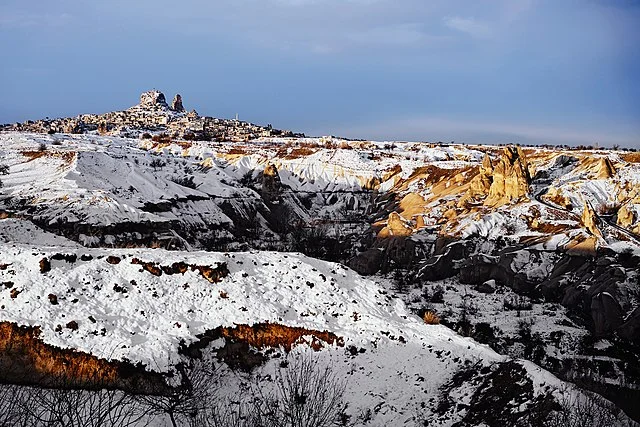Mazi Underground City, located in Turkey, is an extensive subterranean complex. It lies near the village of Mazi in the Cappadocia region. Archaeologists discovered this site in the 1980s. The city is remarkable for its intricate design and construction.
Get your dose of History via Email
Historical Context
Mazi Underground City dates back to the Hittite period, around 2000 BC. However, it likely continued to be used through various eras, including the Byzantine period. The region has a long history of underground habitation. Ancient peoples built these underground cities for protection from invasions and harsh weather.
Architectural Features
Mazi Underground City covers several levels. It stretches deep into the earth, with tunnels and chambers connecting various sections. The city features living quarters, storage rooms, kitchens, and places of worship. Some chambers contain unique ventilation systems, demonstrating advanced engineering skills.
The entrance to the city is discreet, making it difficult to locate. Once inside, visitors find narrow passageways and large rooms. Some spaces are large enough to accommodate several families. The architecture reflects the needs of its inhabitants, providing safety and community.
Purpose and Function
People used Mazi Underground City primarily for shelter. During times of conflict, inhabitants could retreat into the depths. The city could house thousands of people, providing refuge from outside threats. Its design allowed for long-term habitation, with areas for food storage and water supply.
Additionally, the city served as a center for trade and communication. The tunnels connected to other underground cities, facilitating movement across the region. This network enhanced trade and cultural exchange among neighboring communities.
Discovery and Excavation
Archaeologists began to excavate Mazi Underground City in the late 20th century. Initial findings revealed a complex network of tunnels and chambers. Over time, they uncovered artifacts such as pottery, tools, and remnants of food. These discoveries provide insights into the daily lives of the inhabitants.
Excavations continue today, revealing more about the city’s structure and use. Researchers study the materials and construction techniques to understand the engineering capabilities of the ancient builders.
Significance
Mazi Underground City is significant for several reasons. It exemplifies the ingenuity of ancient civilizations in adapting to their environment. The site highlights the importance of underground habitation in the region’s history. It also serves as a valuable resource for understanding social structures, trade networks, and daily life in ancient times.
Mazi Underground City stands as a testament to human resilience. It showcases how communities found ways to survive in challenging conditions. The city remains an important site for researchers and historians.
Conclusion
In conclusion, Mazi Underground City is a remarkable archaeological site in Turkey. Its historical significance, architectural features, and role in ancient society make it an essential subject of study. Continued research will likely yield more discoveries, further illuminating this fascinating underground complex. The city not only reflects the ingenuity of its builders but also the enduring human spirit in the face of adversity.
Source:

